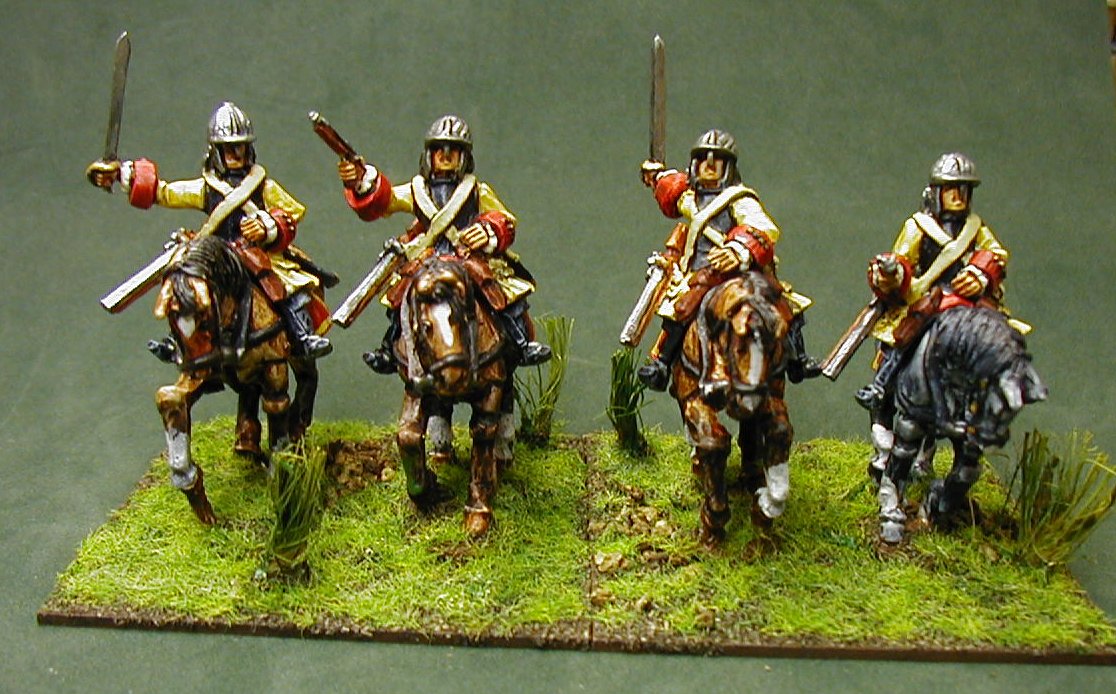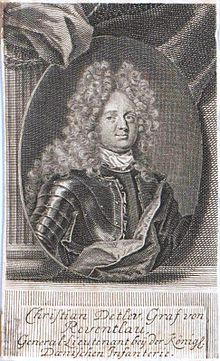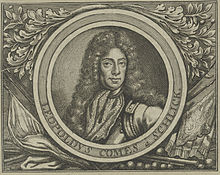Here is one of the three letters about a battle near Scharding, in March of 1703. It was written by a M. de Ricous. The Marquis de Ricous, the
French Minister to Bavaria, was apparently not all that well liked by
Villars. The letter gives the impression that the Minister was on active campaign with the Elector of Bavaria. M. de Ricous was also behind the raising of the
"red grenadiers" in the Bavarian army (more later).
To sum up, a Bavarian force from Scharding attacked some outpost of Graf Schlick, consisting of the regiments Schlick and Hanover. About four to eight miles beyond that was the village believed to be Schlick's HQ, but he had removed himself to Passau. This HQ village, though, still had a force of Saxon cavalry (15-16 squadrons) and about a battalion of infantry as an artillery guard (for an artillery park with at least 4 large cannon, 4 mortars, and a bridging train). Even after these reverses, Schlick had 12000 men. Still need to know what forces were in the area, including what General Stirum was commanding.
 |
| A Bavarian Grenadier, with Grenade! |
Letter from Monsieur de Ricous to Marshal Villars, Scharding, 12 March 1703
(
My French is rusty, at best, so I started with an automatic translation and fixed the more obvious problems with that.)
We left, my lord, the 11th from Scharding, at five in the morning to seek Count Schlick, whose troops quartered beyond the Inn. We first came upon the regiments of Schlick and Hanover, whose quarters were within musket shot from one another. They defended well enough, but finally they were routed and put to flight, and we pursued them as the country, which is only low and close, would permit it. His Electoral Highness then marched to a village, two hours away, where he was told that was their headquarters. He learned by the prisoners, that Count Schlick was in Passau, where he had thrown his infantry on the rumor that we were to attack; but the Saxons were in that village with artillery. We found them in a line of battle of fifteen or sixteen squadrons and four to five hundred infantry, who were to guard the cannons. They fired on us, at our arrival, a few salutes of their artillery, and we amused them by skirmishing, while our troops, who mostly could not walk any further, might form a part of our infantry which came first made them give up the cannon, and at the first movements of our cavalry, they marched by their right to retire in defile which was only half a musket shot away; but there they were pursued so vigorously for about two miles, they were entirely defeated. We have over five hundred prisoners, seventeen or eighteen banners, four pieces of heavy cannon, four mortars, all the munitions of war, all the paraphernalia of a bridge, and all the looted luggage; a Saxon Major General, a colonel, a lieutenant colonel, a major, two captains and other officers prisoners.
I simply have the honor, my lord, to inform you of the whole business that is very important in the situation where we are. We hope to give the same treatment to General Stirum. It will be necessary to do even more before we are done with the business. Count Schlick still has twelve thousand men. We prefer to approach you, to be in range of news from you, and run the project with your response to this letter as his electoral highness will decide.
PS I had the honor to write to you a eight days ago, by three different routes, and I have not received for over three months, one of your letters. We go after tomorrow to the Danube.
 |
| Austrian Kurassiere in Armor |
Here is the original French:
Lettre de M. de Ricous à M. le maréchal de Villars, Scharding, 12 mârs 1703
Nous partîmes, monseigneur, le 11 de Scharding, à cinq heures du matin, pour aller chercher le comte de Schlick, dont les troupes cantonnaient au delà de l'Inn. Nous tombâmes d'abord sur les régiments de Schlick et de Hanovre, dont les quartiers étaient à portée de mousquet l'un de l'autre. Ils se défendirent assez bien, mais enfin ils furent enfoncés et mis en fuite, et on les poursuivit tant que le pays, qui n'est que bas et défilés, le put permettre. Son altesse électorale marcha ensuite à un village, à deux heures de là, où on lui avait dit qu’était le quartier général. Elle apprit, par des prisonniers, que le comte de Schlick était à Passau, où il avait jeté son infanterie, sur le bruit qui courait qu'on le devait attaquer; mais que les Saxons étaient dans ledit village avec l'artillerie. On les trouva en bataille au nombre de quinze ou seize escadrons et quatre à cinq cents hommes d'infanterie, qui étaient pour la garde du canon. Ils nous firent, à notre arrive, quelques saluts de leur artillerie, et on les amusa par quelques escarmouches, en attendant que nos troupes, qui la plupart du temps ne pouvaient marcher qu’un à un, se pussent former Une partie de notre infanterie qui arriva leur fit d’abord abandonner le canon, et aux premiers mouvements de notre cavalerie, ils marchèrent par leur droite, pour se retirer dans un défilé qui n’était qu’à demi-portée de mousquet; mais ils y furent poursuivis si vivement pendant près de deux lieues, qu’ils ont été entièrement défaits. Nous avons plus de cinq cents prisonniers, dix-sept ou dix-huit étendards, quatre pièces de gros canon, quatre mortiers, toutes les munitions de guerre, tout l’attirail d’un pont, et tout le bagage pillé; le général major des Saxons, un colonel, un lieutenant colonel, un major, deux capitaines et d’autres officiers prisonniers.
J'ai l'honneur simplement, Monseigneur, de vous informer du gros de l’affaire qui est très importante dans la situation où nous sommes. Nous espérons bientôt aller faire le même traitement au général Stirum. Il s’en faut encore beaucoup que nous soyons hors d’affaire. Le comte de Schlick a encore douze mille hommes. Nous aimons mieux nous approcher de vous, pour être à portée d’attendre de vos nouvelles, et d’exécuter le projet dont votre réponse à la lettre de son altesse électorale décidera.
PS J'eus l'honneur de vous écrire, il ya huit jours, par trois voies différentes, et je n'ai reçu, depuis plus de trois mois, qu’une seule de vos lettres. Nous remontons après-demain le Danube.
Labels: Austria, Bavaria, history








